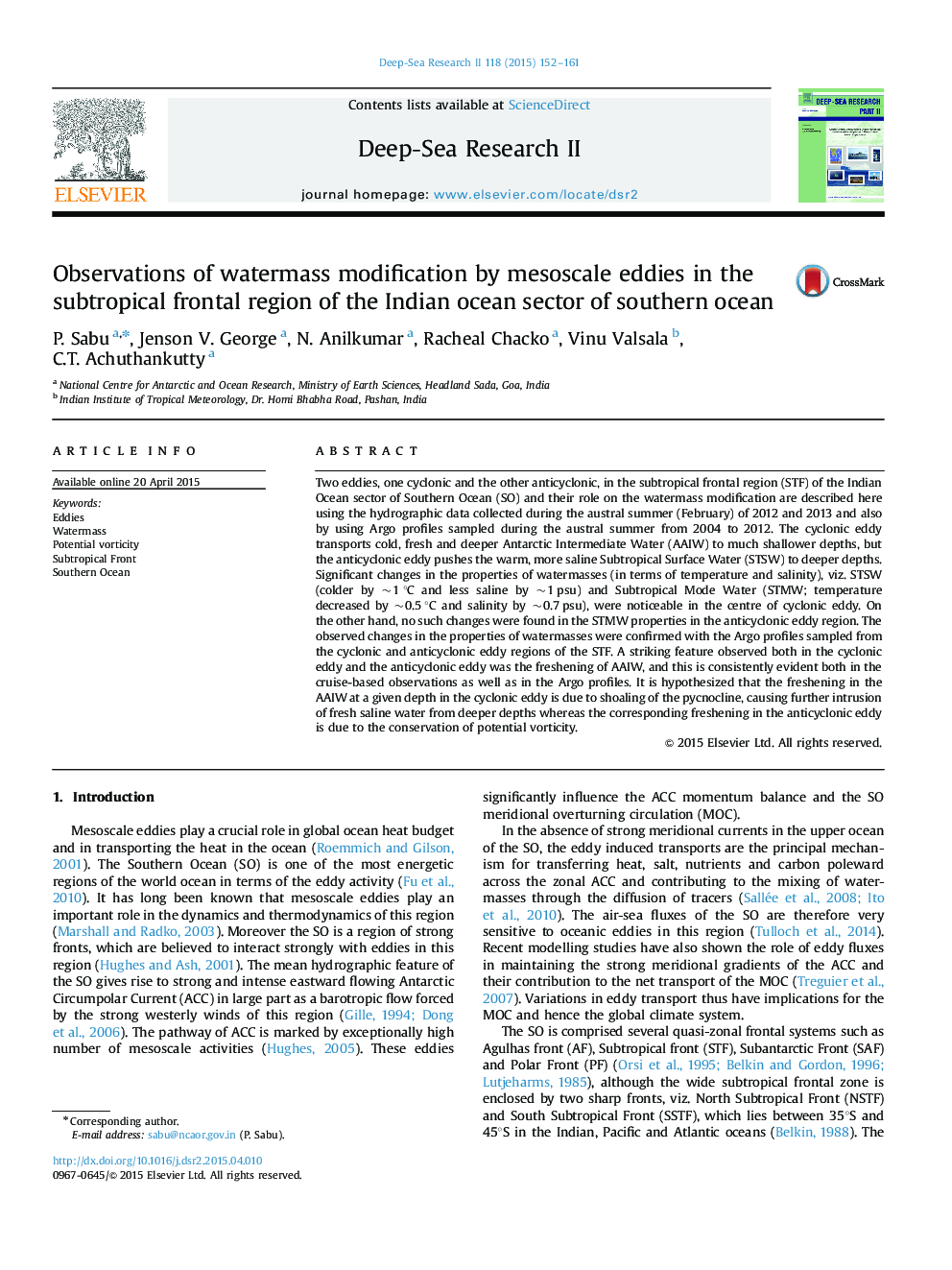| Article ID | Journal | Published Year | Pages | File Type |
|---|---|---|---|---|
| 4536193 | Deep Sea Research Part II: Topical Studies in Oceanography | 2015 | 10 Pages |
Two eddies, one cyclonic and the other anticyclonic, in the subtropical frontal region (STF) of the Indian Ocean sector of Southern Ocean (SO) and their role on the watermass modification are described here using the hydrographic data collected during the austral summer (February) of 2012 and 2013 and also by using Argo profiles sampled during the austral summer from 2004 to 2012. The cyclonic eddy transports cold, fresh and deeper Antarctic Intermediate Water (AAIW) to much shallower depths, but the anticyclonic eddy pushes the warm, more saline Subtropical Surface Water (STSW) to deeper depths. Significant changes in the properties of watermasses (in terms of temperature and salinity), viz. STSW (colder by ~1 °C and less saline by ~1 psu) and Subtropical Mode Water (STMW; temperature decreased by ~0.5 °C and salinity by ~0.7 psu), were noticeable in the centre of cyclonic eddy. On the other hand, no such changes were found in the STMW properties in the anticyclonic eddy region. The observed changes in the properties of watermasses were confirmed with the Argo profiles sampled from the cyclonic and anticyclonic eddy regions of the STF. A striking feature observed both in the cyclonic eddy and the anticyclonic eddy was the freshening of AAIW, and this is consistently evident both in the cruise-based observations as well as in the Argo profiles. It is hypothesized that the freshening in the AAIW at a given depth in the cyclonic eddy is due to shoaling of the pycnocline, causing further intrusion of fresh saline water from deeper depths whereas the corresponding freshening in the anticyclonic eddy is due to the conservation of potential vorticity.
